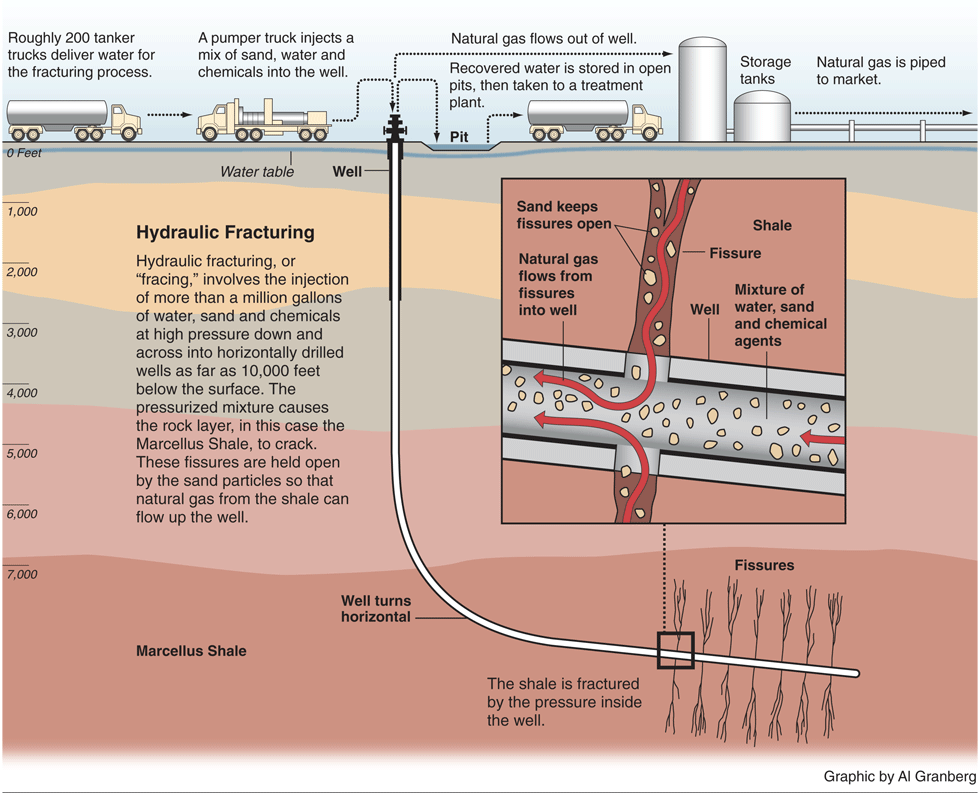At 444 pages, the North Carolina Oil and Gas Study is an extensive document, with 10 main sections and 7 appendixes. There are also a total of 89 figures and 60 tables included in the report. All in all, that’s a whole lot of information.
During the month of April, the Raleigh Public Record will be tackling this entire document, conducting interviews with experts and breaking it down section by section so you can be as informed as possible before DENR’s May 1 deadline to the General Assembly.
Check in a few times a week, and watch for #NCFrackFocus on Twitter for daily updates as we work our way through what you need to know.
Have a specific question you want us to address? Email lwhite@raleighpublicrecord.org or Tweet @lewhite.
Today is the last day to submit written comments regarding the Oil and Gas Study draft report recently released by the Department of Environment and Natural Resources. The report found hydraulic fracturing to be a viable means of extracting shale gas in North Carolina, as long as the right protections are in place.
However, the report also cites some significant limitations in its analysis, such as time constraints and available information, and immediately recommends 20 different and fairly extensive actions that should be taken prior to issuing permits for hydraulic fracturing in North Carolina.
Some of these recommendations include gathering baseline data for ground and surface water as well as air quality, identifying areas such as floodplains where drilling should be prohibited, and developing regulatory programs for managing water withdrawal, site stormwater and wastes.
These programs are especially important, according to the study, because North Carolina does not have standards appropriate for monitoring the methods and wastes of oil and gas extraction since the state has no prior history with the industry.
DENR also recommends that the state prohibit the use of diesel fuel in fracking fluids and require full disclosure of all chemical components to state regulatory agencies.
Fracking fluid is used to further the fracturing of rock layers and release gas in the hydraulic fracturing process. While exact compositions vary, it is typically a slurry of water, proppants — a material such as sand that keeps the fracture from closing once injection of the fluid stops — and chemical additives.
What is fracking?

Graphic by Al Granberg/Pro Publica. http://propublica.org
Other recommendations include the need for additional research on local government, infrastructure and the economy, as well as addressing the natural gas industry’s liability for any environmental contamination that results from fracking.
A full list of these recommendations can be found on pages 10 and 11 of the draft report.
The conclusion determined by DENR seems contradictory, given the number and extent of recommendations. There were also several significant limitations of the study, one being the amount of available information regarding actual amounts of natural gas within the Triassic shale beds, which DENR cited as a constraint.
DENR staff assisted the North Carolina Geologic Survey in 2010 to collect and analyze data in North Carolina’s Mesozoic basins, including Triassic basins, which DENR states will provide “the most rigorous assessment” of potential shale gas resources. But those results will not be available until this summer.
Since the deadline for DENR to present to the General Assembly is May 1, the information from the NCGS study couldn’t be included in DENR’s report, meaning DENR estimates regarding gas resources were derived from two pre-existing wells in the Sanford sub-basin.

This sub-basin is located in Lee County, and at 59,000 acres is only a small percentage of the Deep River Basin. This is in turn is only a portion of North Carolina’s Triassic basin formations, which total 785,000 acres state-wide.
Because the information derived from these two wells varied greatly, the report states that it is unclear how accurately the average value represents the available resource in the Sanford sub-basin, meaning this uncertainty extends to the statewide natural gas resource as well.
This initial handicap carries over into other important assessments within the document, since these limited projections also had to be used to determine potential economic and environmental impacts.
According to DENR, there are some aspects of oil and natural gas extraction for which even national data is extremely limited, specifically in regards to groundwater and health impacts. While there are a number of applicable studies currently under way, DENR again cites the limited time given them to prepare the report as a hindrance, since the results of these studies haven’t been released yet and therefore could not be considered.
One of the studies cited as being potentially helpful in North Carolina is an Environmental Protection Agency report regarding impacts on drinking water, a preliminary version of which will be released later this year.
North Carolina’s gas resources are much closer to the surface than in any other gas-producing state, starting at depths of 3,000 feet as opposed to, for example, the 10,000 feet at which the Pennsylvania shale gas resource lies.
Since water supply wells of up to 1,000 feet have been found in North Carolina’s Triassic basins, and freshwater depths are unknown, issues of water quality and contamination could be more prevalent in North Carolina.
The report cites the need for a better understanding of usable groundwater resources in order to protect drinking water and safely regulate well construction standards.
The final report of this draft is due to the General Assembly May 1, and will include public comments. Written comments on the report will only be accepted through today, April 2. Send your own to Shale_gas_comments@ncdenr.gov.
